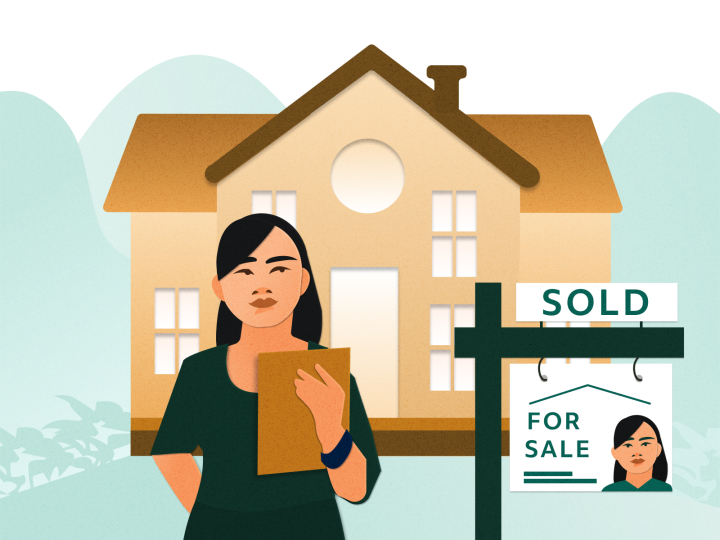A Comprehensive Guide to Investing in Real Estate Lockhart
A Comprehensive Guide to Investing in Real Estate Lockhart
Blog Article
The Future of Property: Trends and Opportunities to View
As the realty landscape develops, it comes to be progressively necessary to understand the arising fads and chances that will specify the industry in the coming years. Technical improvements are reshaping transactional procedures, while a growing concentrate on sustainability mirrors changing customer concerns. Additionally, demographic shifts and the surge of remote work are affecting real estate choices, especially in country areas. With these dynamics at play, a closer examination of the adaptations and strategies required for success reveals interesting possibilities that could reshape financial investment approaches and market behaviors.
Technological Advancements in Property
In recent years, the actual estate industry has actually accepted a wave of technical technologies that are changing standard methods. One of the most notable innovations is the rise of huge information analytics, which permits real estate professionals to examine market fads, forecast residential or commercial property values, and recognize financial investment opportunities with unmatched accuracy.
Furthermore, digital reality (VR) and increased fact (AR) technologies are changing residential or commercial property advertising and marketing by offering immersive experiences for prospective customers and lessees. These devices permit customers to conduct virtual tours of buildings, therefore simplifying the search procedure and improving customer involvement. Blockchain technology is gaining traction as a way to secure transactions and keep clear records, thereby decreasing fraudulence and accelerating the closing process.
Smart home technologies are also coming to be progressively common, enabling homeowners to monitor and control their residential properties from another location (Real Estate Lockhart). Collectively, these technological technologies are improving the landscape of actual estate, promoting a more effective, transparent, and customer-centric industry
Demand for Lasting Features
As consumers significantly prioritize ecological obligation, the need for sustainable residential or commercial properties has actually surged in the realty market. This shift mirrors a broader social trend towards sustainability, with investors and property buyers seeking buildings that reduce eco-friendly impact while maximizing power performance. Features such as photovoltaic panels, energy-efficient appliances, and lasting building materials are currently deemed important instead of optional.

Additionally, the rise of green communities, which prioritize walkability and accessibility to public transport, further highlights this pattern. These advancements attract ecologically conscious purchasers and advertise a healthier way of life.
As the need for lasting residential properties remains to climb, industry stakeholders have to adjust to these expectations. By prioritizing and embracing cutting-edge methods sustainability, the realty field can not only meet customer need but also add to a much more lasting future.
Transforming Purchaser Demographics

In addition, the maturing populace is reshaping demand for housing. Baby boomers are seeking scaled down houses that use accessibility and reduced Get More Information upkeep, usually preferring city setups with neighboring services. This change requires a concentrate on multi-generational housing services that fit varying needs.
Additionally, multiculturalism is playing a crucial duty in realty trends. Buyers from various backgrounds bring distinct choices and assumptions, triggering designers to develop inclusive settings that provide to a larger audience. As these market shifts remain to progress, real estate specialists need to adapt their approaches to attend to the demands of these diverse buyers. Recognizing these altering demographics will certainly be vital in determining crafting and arising chances customized advertising approaches that resonate with the varied needs these days's market.
Surge of Remote Work Effect
Increasingly, the rise of remote job is changing the realty landscape, triggering substantial shifts in purchaser choices and area choices. As workers appreciate the flexibility of working from home, several are reassessing their residential needs, causing a rise in need for residential or commercial properties in country and country locations. This fad is primarily driven by the need for more roomy living environments that can suit office and a far better lifestyle.
Additionally, urban centers, as soon as the focal factor for buyers, are witnessing a progressive decline popular as individuals prioritize cost and accessibility to nature. Consequently, realty programmers and investors are shifting their focus toward residential or commercial properties that use home office spaces, outside facilities, and proximity to essential solutions.
This developing landscape necessitates a reevaluation of traditional market methods. Property experts should adapt to the altering choices of customers, stressing the significance Get More Info of way of living consider their advertising approaches. In addition, contractors are increasingly prioritizing versatile flooring plans that deal with the twin needs of living and working, ensuring that they remain competitive in a swiftly transforming market. The ramifications of remote work on realty are extensive, forming future trends and possibilities.
Financial Investment Opportunities in Arising Markets
Financial investment chances in arising markets are regularly standing out from investor seeking diversity and development possibility. These markets, defined by rapid financial advancement, boosting urbanization, and a growing center course, existing special leads for smart financiers. Countries in Southeast Asia, Africa, and Latin America are observing considerable infrastructure improvements and desirable government plans, which further improve their appeal.
Property sectors such as residential, commercial, and logistics are experiencing enhanced need due to metropolitan movement and progressing consumer preferences. Especially, cities like Ho Chi Minh City, Nairobi, and Medellín are becoming hotspots for investment as a result of their increasing economic climates and vibrant demographics.
Financiers ought to perform thorough market evaluations to recognize essential patterns, such as changes in populace characteristics and financial stability, which can affect property worths. Furthermore, collaborations with local genuine estate companies can help with effective access and navigation in these markets.
Nevertheless, it's essential to be mindful of possible dangers, including political instability and regulatory difficulties. By weighing these aspects and embracing a lasting viewpoint, capitalists can successfully take advantage of the lucrative possibilities emerging in these developing regions.

Verdict
In final thought, the future of realty will certainly be substantially affected by technical innovations, an expanding focus on sustainability, and evolving customer demographics. The increase of remote job is reshaping housing preferences, particularly in suburbs. Additionally, arising markets existing considerable investment possibilities for stakeholders going to adapt to these adjustments. Navigating this changing landscape will certainly require strategic partnerships and an eager understanding of market characteristics to profit from the trends forming the industry.
As the genuine estate landscape advances, it comes to be increasingly vital to understand the arising trends and chances that will certainly define the market in the coming years. One of the most noteworthy advancements is the rise of big data analytics, which allows genuine estate professionals to evaluate market trends, predict residential or commercial property values, and recognize investment opportunities with unmatched precision.As consumers progressively prioritize environmental obligation, the demand for have a peek at this site lasting properties has surged in the real estate market. The ramifications of remote job on real estate are extensive, forming future patterns and chances.
Financial investment opportunities in arising markets are constantly drawing in attention from real estate financiers seeking diversity and development capacity.
Report this page